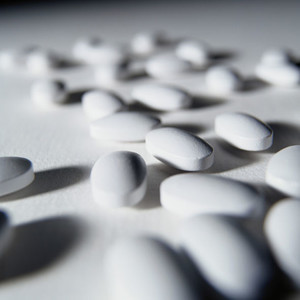A study carried out by researchers from Harvard Medical School found a lower rate of switchback when patients were switched to an authorized generic from the brand-name product rather than when they were switched to another generic drug product [1].
The study was carried out between 2004 and 2013 and included beneficiaries of a large private commercial health plan (primary cohort) and the public Medicaid insurance programmes (replication cohort) in the US.
Patients taking brand-name products for one of the study drugs (alendronate tablets, amlodipine tablets, amlodipine-benazepril capsules, calcitonin salmon nasal spray, escitalopram tablets, glipizide extended release tablets, quinapril tablets, and sertraline tablets) were identified when they switched to an authorized generic or a generic drug product after the date of market entry of generics.
A total of 94,909 patients switched from brand-name products to authorized generics and 116,017 patients switched from brand-name products to generics and were included in the switchback analyses.
Switchback rates were 8.2 per 100 person years (PY) across all drug products, with a low of 3.8/100PY (for alendronate tablets) to a high of 17.8/100PY (for amlodipine-benazepril capsules). Switchback rates were consistently lower for patients who switched from brand-name products to authorized generics compared with brand-name products to generics in the primary cohort (pooled hazard ratio 0.72, 95% CI: 0.64−0.81). Similar results (0.75, CI: 0.62−0.91) were observed in the replication cohort.
Authorized generics are produced by originator (brand-name) companies under the same new drug application (NDA) as the originator product and marketed and distributed by an authorized generic drug distributor with a generic drug product label. Authorized generics contain the same excipients as the originator product and therefore have the same taste as the originator product, as well as being the same colour, size and shape.
Other generics are approved via abbreviated new drug applications (ANDAs) and may differ in the excipients they contain, as well their colour, size and shape.
The authors in this study concluded that the reason for the difference between authorized generics and other generics may be ‘driven by negative perceptions of generics’ due in part to the fact that generics may have a different appearance and excipients compared with the brand-name drug.
Differences in the physical attributes of generics have been linked to lack of adherence when patients are switched from brand-name products to generics [2]. FDA is also concerned that differences in the physical characteristics of medicines, e.g. size and shape of the tablet or capsule, ‘may affect patient compliance and acceptability of medication regimens or could lead to medication errors’. The agency carried out a survey of patients and pharmacists to gain an understanding of their perception of certain physical attributes in generics in 2014 [3] and issued finalized guidance on the size, shape and other physical attributes of generics in 2015 [4].
Conflict of interest
The authors of the research paper [1] reported conflicts of interest, including being principal investigator of research grants from Novartis, Eli Lilly, Merck; being a consultant to Aetion, being an employee of US FDA.
For full details of the respective authors’ conflict of interest, see the research paper [1].
Editor’s comment
Medicaid is a social healthcare programme in the US for families and individuals with low income and limited resources.
Related article
GPhA challenges FDA guidance on size and shape of generic pills
References
1. Desai RJ, Sarpatwari A, Dejene S, et al. Differences in rates of switchbacks after switching from branded to authorized generic and branded to generic drug products: cohort study. BMJ. 2018;361:k1180.
2. GaBI Online - Generics and Biosimilars Initiative. Generic medicine switches confuse patients and reduce adherence [www.gabionline.net]. Mol, Belgium: Pro Pharma Communications International; [cited 2018 Apr 20]. Available from: www.gabionline.net/Reports/Generic-medicine-switches-confuse-patients-and-reduce-adherence
3. GaBI Online - Generics and Biosimilars Initiative. FDA to carry out survey into affect of generics shape, colour, size [www.gabionline.net]. Mol, Belgium: Pro Pharma Communications International; [cited 2018 Apr 20]. Available from: www.gabionline.net/Guidelines/FDA-to-carry-out-survey-into-affect-of-generics-shape-colour-size
4. GaBI Online - Generics and Biosimilars Initiative. FDA wants generics to be physically same as originators [www.gabionline.net]. Mol, Belgium: Pro Pharma Communications International; [cited 2018 Apr 20]. Available from: www.gabionline.net/Guidelines/FDA-wants-generics-to-be-physically-same-as-originators
Permission granted to reproduce for personal and non-commercial use only. All other reproduction, copy or reprinting of all or part of any ‘Content’ found on this website is strictly prohibited without the prior consent of the publisher. Contact the publisher to obtain permission before redistributing.
Copyright – Unless otherwise stated all contents of this website are © 2018 Pro Pharma Communications International. All Rights Reserved.








 0
0











Post your comment